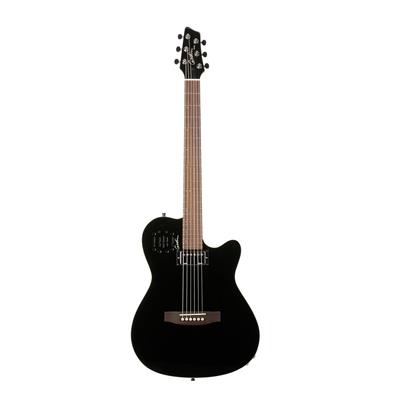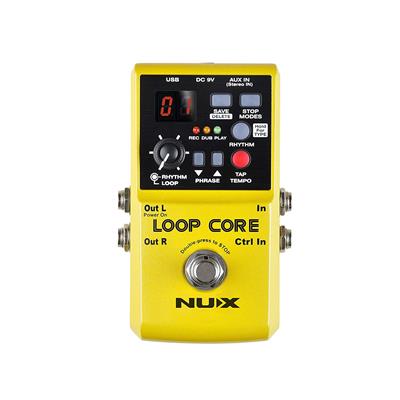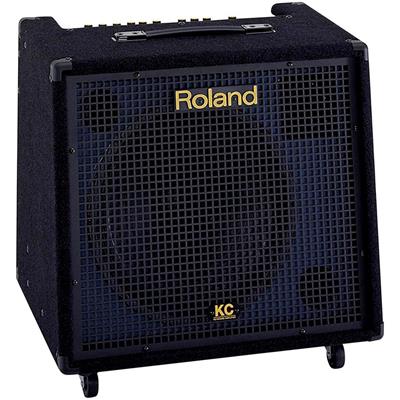Tube amplifiers reign supreme among amplifiers, representing the pinnacle of guitar equipment. With an unrivaled history and evolution, they offer a tone and quality that surpasses anything else available.
So if you plan on buying a tube amplifier there are several things you need to know beforehand. First of all, tube amps are expensive. While cost is relative and there is quite a good range of more “affordable” tube amps, they are still much more expensive than an average solid-state amplifier. Then again there is a good reason for that. Tube amps bring better tone and quality.
While I do love a solid-state amplifier and you can read up on some of our favorite and best solid-state amps in another article, a tube amp is something I would go to for a better, more subtle, and nuanced sound (if I got the money, of course). So you are reading this article for one of two reasons, you got that money and want a tube amp or you are doing your research to one day achieve your dream of owning a tube amp. In either case, enjoy the list of the best tube guitar amplifiers that we think are worth your money.
What’s The Best Tube Guitar Amp
| Image | Amplifier Model | ||
|---|---|---|---|
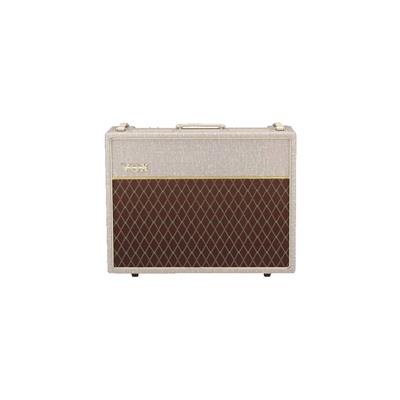 | VOX AC30HW2 Hand-Wired |  (4.9 / 5) (4.9 / 5) | Check on Amazon |
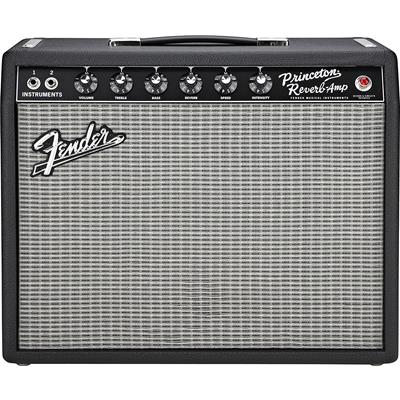 | Fender '65 Princeton Reverb Tube Combo Amp 15-Watt |  (4.9 / 5) (4.9 / 5) | Check on Amazon |
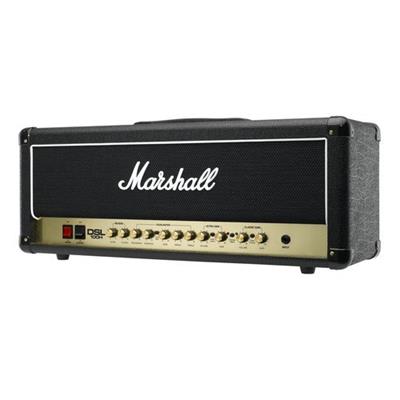 | Marshall DSL Series DSL100H |  (4.9 / 5) (4.9 / 5) | Check on Amazon |
 | Line 6 DT25 |  (4.8 / 5) (4.8 / 5) | Check on Amazon |
 | Orange Dual Terror |  (4.8 / 5) (4.8 / 5) | Check on Amazon |
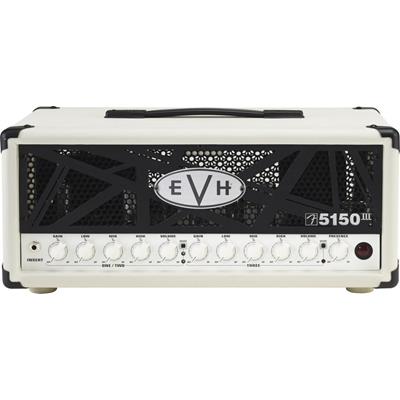 | EVH 5150 III |  (4.8 / 5) (4.8 / 5) | Check on Amazon |
 | Blackstar HT Club 50 |  (4.8 / 5) (4.8 / 5) | Check on Amazon |
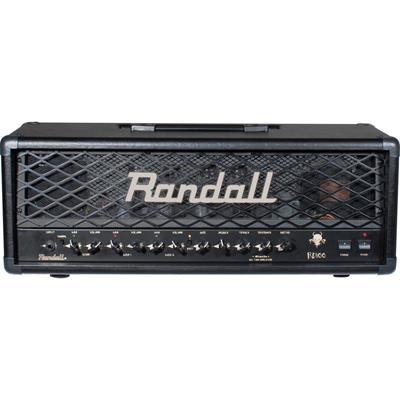 | Randall RD100H Diavlo Series |  (4.8 / 5) (4.8 / 5) | Check on Amazon |
 | Peavey 03608820 ValveKing II |  (4.8 / 5) (4.8 / 5) | Check on Amazon |
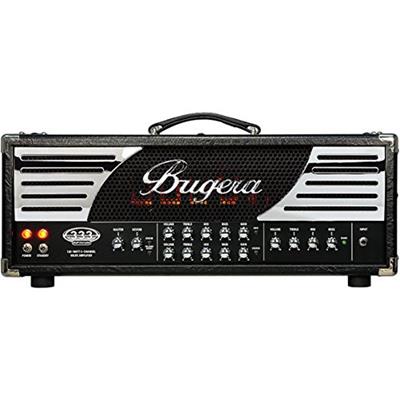 | BUGERA 333XL INFINIUM |  (4.8 / 5) (4.8 / 5) | Check on Amazon |
VOX AC30HW2 Hand-Wired VOX Combo Amplifier, 30W, 12″

We will start with VOX AC30HW2 Hand-Wired VOX Combo Amplifier, 30W, 12″. This amp is a hand-wired combo that seems to be too small to deliver the volume and good tone but once you turn it on and start playing the revered Vox tone will hit straight in the face. With an all-tube design (containing three preamp tubes, four power tubes, and one rectifier tube) and hand-wired turret board construction, this VOX amp brings class in design and sound. First of all, the birch plywood cabinet has solid bracing with vintage fawn-colored vinyl on top and the natural high-frequency diffuser and Vintage fawn-colored vinyl. This is a 30-watt model but I do not need to tell you that a 30-watt tube model can do a lot more than a 70-watt solid-state amp. The 2-channel design of this amplifier includes footswitch controls for adjusting the hot/cool settings of the top boost channel. Despite its compact size, this model may appear costly, but rest assured, it delivers exceptional sound quality and proves to be an excellent choice for both home practice and live performances.
Pros:
- Ethereal clean tones
- Versatile and useful features
- You can reduce the power and receive even more sonic options
Cons:
- A bit expensive
Fender ’65 Princeton Reverb Tube Combo Amp 15-Watt
| Features: |  |
| Controls: |  |
| Sound: |  |
| Value: |  |
| Average: |  |

Princeton Reverb has achieved legendary status in the music industry over the years. With its initial release and subsequent reissues, it has garnered significant acclaim. It would be remiss not to include this model in our compilation of the finest tube amplifiers, as it undeniably ranks among the very best. Fender ’65 Princeton Reverb is one of the best tube guitar amps which produces 15 watts of power and drives a single 10” Jensen® C10R speaker. The valve section looks equally impressive: the preamp hosts three 12AX7 and 12AT7 tubes, while the power amp is equipped with two 6V6 tubes (let’s not forget the 5AR4 rectifier). ’65 Princeton Reverb provides musicians with the ability to experiment with Fender’s renowned spring reverb and play with some tube vibrato as well. This puppy is extremely loud and powerful – it turns into an unbeatable monster once plugged in. Whether you’ve played Fender Amps before or not, this is the one you should try no matter what!
Pros:
- Louder than you would expect
- Excellent tonal definition
- Sound fantastic with or without effects
Cons:
- Doesn’t have rubber feet
- Doesn’t have a standby switch
Marshall DSL Series DSL100H 100-Watt All-Tube Guitar Amplifier Head

Perhaps you desire a tube amplifier and find it unfathomable to spend an entire day performing, recording, or practicing with a solid-state or inferior-quality amp. However, it’s possible that, like many individuals, you are unable to allocate thousands upon thousands of dollars for a single equipment piece. Granted, it is a very important piece of equipment but it is beyond expensive. BUT fret not my friend, there are still options for players who cannot spend anything over $1000. One of those amps is Marshall DSL Series DSL100H 100-Watt All-Tube Guitar Amplifier Head. Part of the popular DSL series, this amplifier features 100 watts, two channels (classic gain and ultra-gain), resonance control that’s easy to use, studio-grade digital reverb, and a lot more. I would say this is probably one of the best options for someone who is eager to find a classical sound and wants an amp for home practice, or even small gigs. Compared to the other tube amps, this is not a small model but it delivers on the sound and is very durable.
Pros:
- Sounds like a classic Marshall amp
- Delivers versatile tones
- All tube circuitry
- Adjustable power allows you to use it anywhere
Cons:
- Ultra Gain channel is not everybody’s cup of tea
- The reverb is not the best
Line 6 99-021-0716 DT25 25W/10W Guitar Amplifier Head

Line 6’s amplifiers are great and we have reviewed some of their solid-state, modeling amps but if you are looking to upgrade to a more “pro-level” or a tube amp there is no better place than with Line 6 DT25 25W/10W Guitar Amplifier Head. With four amp voicings ranging from Classic American Clean to Modern, High-Gain coupled up with HD amp modeling technology that pairs the voicings with corresponding Bogner-designed dynamic analog circuitry you will be getting a lot of versatility without having to work too hard. With this amplifier, you will be getting a boutique amp quality for a lot less price. This particular model stands out for its lightweight design in comparison to other tube amps, making it more convenient to handle and maintain. Regardless of the volume level you desire, achieving your desired tone is a breeze with simple adjustments. In conclusion, I highly recommend this amplifier to anyone seeking an exceptional tone combined with functionality and portability.
Pros:
- Selectable operating class and power tube mode
- Diverse amp voicings and modeling
- Convenient and easy to use
Cons:
- The volume maybe a bit uneven at certain settings
Orange Dual Terror 30/15/7W 2-Channel Tube Head

Let’s move to an amplifier that looks a bit different than the rest of the models. I mean, yes the tone and volume are what makes you buy an amplifier but the looks that stand out are a great bonus too. Orange Dual Terror 30/15/7W 2-Channel Tube Head has that bonus and quite a bit of it. Out of all the tube guitar amps, this one is probably the most original looking one. Looks aside, this amplifier has to offer a lot more. With 30 watts, a power switch, independent volume, tone, and gain controls for all channels and four ECC83 tubes and four EL84 tubes this amp has a bombastic sound that you would not expect from such a small model. Apart from that, this is probably the most transportation-friendly equipment on this list. It’s lightweight and durable so if you are gigging a lot and don’t want to damage your equipment, this model is going to be a great option. It also comes with a padded gig bag including keeping the amp safe and clean.
Pros:
- Very lightweight and portable
- Amazing sound quality,
- Louder than one would expect
- Distinctive design
Cons:
- Lacks tone controls (even though the single knob works perfectly fine)
- Does not have the effects loop
EVH 5150 III 50-watt Tube Head

EVH 5150 III 50-watt Tube Head is like David that kills off Goliath. You would not expect that a tube amp of this size could produce the volume that this model does. The chassis is downsized but thankfully EVH did not have to “downsize” the volume due to this change. With 50 watts you will be getting a lot of volumes to cover pretty big audiences. The 3 channels include Channels 1 and 2 that share EQ, gain, low, mid, and high volume, and Channel 3 sports gain, low, mid, and high, volume. The three channels give you the versatility of choosing between clean, crisp, and a bit more crunch to your sound so choose wisely or you know… experiment cause that is the only way to figure out what will work for you. The model is great for gigging and home practice, it is also lightweight enough to transport without a lot of hassle. This amp is a classic American amp, it is an homage to EVH 5150 which was popular in the ‘90s. Well, an homage would not be the correct word. It is more of an upgrade of the 5150 and is one of the best tube guitar amps, especially for heavy music.
Pros:
- Wide range of distortion and overdrive
- Well-built and durable
- Eddie Van Halen’s signature tones
- Spectacular sound quality
Cons:
- Your sound might lose some high-end definition with extreme settings of the third channel
Blackstar HT Club 50 50-Watt Guitar Amp Head

If you want the quality of a boutique amplifier but have been eating instant noodles for breakfast, lunch, and dinner and still cannot save up enough for a $1000 and up-mark amplifier, maybe look into something less expensive. Tube Amps get this reputation that no one but pro players can afford them. While in some cases tube amps are actually too expensive for a “layman” it is not generally true. Take Blackstar HT Club 50 50-Watt Guitar Amp Head as an example. This amp comes very close in quality of the sound and builds to boutique models but costs under $700. This all-tube combo amp will be great for recording, gigging, and not to mention home practice. In addition, the revoiced reverb feature enhances your performance by adding greater depth and nuanced sound. To ensure optimal tone and exceptional audio quality, you can utilize the emulated line-out and USB audio output options at your disposal.
Pros:
- Relatively affordable
- Extremely diverse features and sounds
- Takes effects pedals beautifully
- Comes with a footswitch
Cons:
- Dirty channel might not be dirty enough for some
Randall RD100H Diavlo Series Amplifier

Do you have those moments in your life when you just stop and take in the moment to appreciate the world and people around you? It is almost like you do not know what you did to deserve the great people in your life! Well, toss that thought. Once you get Randall RD100H Diavlo Series Amplifier the only moments you will stop using it is to think “What the hell did I ever do to deserve this amazing amp”, meanwhile your relatives and friends are concerned because you’ve been playing non-stop for days and have not seen anyone. Well, exaggerations aside, this Randall amplifier is actually a great deal better than what I expected from an $800 tube amp. This is a 100-watt model with three channels and a turbo boost. Apart from that you also get speaker-emulated XLR output as well as 12AX7 preamp tubes and 6L6 power tubes. These features and a lot more will allow you to control your sound and produce the tone that you have been dreaming off for years and years.
Pros:
- An extensive range of distortion
- Can create natural tube overdrive
- Comes with a footswitch
- Featured in a durable, sturdy chassis
Cons:
- Does not have reverb
- Might develop some noise at certain settings
Peavey 03608820 ValveKing II 100W Guitar Amplifier

Peavey is probably one of my top amp brands. They have not failed to produce one good amp after another. One of them is ValveKing II 100W Guitar Amplifier. This is another 100-watt amp that covers all the needs you have or might have. With any amp you need versatility. This amp provides a tone that is perfect for jazz, metal, rock, and a lot more. But do not assume that versatility means that it is hard to control and achieve the sound you want. With a pretty simple layout and controls, you will not be scrambling for instructions even as a beginner. This amplifier allows you to switch from 5-watt to 25 and 100. Plus, there is an XLR mic sim output, USB output for recording, and connects your amp directly to the computer. The maintenance of tube amps is a pretty big drawback for a lot of people. You spend quite a lot on the initial purchase but after that maintaining the tubes is quite a luxury. That is why Peavey is equipped with a model with a TSITM tube-monitoring indicator that will show you the health of your tubes and allow you to take the appropriate actions in time.
Pros:
- Outstanding sound quality
- Versatile features and tones
- Great for gigging, practice or studio
- Vari-class functionality
Cons:
- Might have too much gain for some
- Not everyone fancies digital spring reverb
BUGERA 333XL INFINIUM

You know those deals that seem too good to be true and you just dismiss them. Well, that is me pretty much anytime I see an amplifier, especially a tube amp that is advertised as a bargain or “boutique quality but cheap”. It takes a lot of persuasion on the part of my friends of reviewers for me to actually check them out and once I do a lot of them are disappointing. So whenever there is an exception I get so excited I have to scream about it to everyone (sometimes literally…). One of those great exceptions is BUGERA 333XL INFINIUM. I have tried several of Bugera amps and while they were all pretty decent, this one has to be the winner for me. The 333XL Infinium is an all-tube amp head with 3 channels that have separate gain, volume, and EQ controls. This model also features a class A/B power section with 120 watts. It is an amp that will be nuance enough to use for recording, loud enough for gigs, and easy to use enough for home practice.
Pros:
- Extremely affordable for a tube amplifier
- Offers versatile and usable features
- Comes with a footswitch
- Has an INFINIUM Tube Life Multiplier technology
Cons:
- Noise-gate might not be powerful enough to substitute your pedals
Are tube amps better than solid-state amps?
So why is it that so many people claim the superiority of vacuum tube amplifiers over its cousin and rival, solid-state amplifier? The honest ones among the musicians you know and the reviewers you read will tell you that both sides have a reason to feel superior to the other. If you have ever flipped a coin, then you know there are two sides to them, just like to anything else. The story of the vacuum tube amplifiers has two sides as well, the side of the pretty, glamorous and warm and the side of the ugly, annoying and expensive. So it is unfair to say that one type of amplifier is better than the other, without first considering what suits you best. Every amplifier has their time and place, so why wouldn’t the more general two different types of amplifiers have their time and place as well? The thing is, everyone determines when the time and place a vacuum tube amplifier is on their own. The best I can do is give you some general pointers and maybe you give you the general idea of how each type of the amplifier is different from the other. So let me get into talking about some of the outstanding things, both good and bad, about vacuum tube amplifiers while you patiently wait for me to stop talking too much.
Sound
The tube sound, the vacuum tube sound, or the sound otherwise known to be the favorite of guitar, bass guitar, and otherwise instrumental purists, has not been a concept for a whole long time, relatively speaking. The idea of the tube sound began a long time ago when people started working with amplifiers that were designed without the vacuum tube installed, also known as solid state or transistor amplifiers. Until then the tube sound did not exist because it was the only sound any amplifier would or could make. Then somebody went ahead and created the android to the vacuum tube’s iPhone and as is the case with the two sides of anything, humans decided to argue about it. Now have two camps arguing about the sound of one or the other is superior. I don’t think either is superior, but I do think that each is unique in its own way.
The tube sound is one of the most popular arguments for the superiority of the tube amp. It is known to be a little rounded and a little fuller than the sound of the solid-state amplifier. The reason will be explained in the more technical “how it works” section of this article. The difference between the vacuum tube and the solid state sound is hard to describe in words, but I shall attempt it nevertheless. A lot of players like to say that the sound is fuller and feels alive in the vacuum tube amplifier. It is not something I am going to disagree with, but I will add onto: the vacuum tube amplifier feels a little more alive, with the distortion on the vacuum tube feeling a lot more powerful. This one time I heard the difference between the sounds described as between analog and digital sounds, with the analog being the vacuum tube. I don’t fully agree with it, but I can appreciate the sentiment since the vacuum tube does have a more natural feeling sound. Though some of the best solid-state amplifiers in the modern day don’t suffer from the problem of an artificial feeling as some of the older models did.
One more thing about the sound of the vacuum tube: to really feel the power and brightness of the tone of the amplifier, you need to turn the volume up high. Not extremely high but above the number three on the knob, because otherwise, the sound of the amplifier will not feel up to par. This means that all of the practice that you have been wanting to do with your tube amp either needs to be done in a soundproofed room, or at the expense of your parents’, roommate’s and neighbors’ eardrums. And I will tell you right now, in the modern world, that will not always (read: never) fly for longer than a week. It would not fly with me and I am usually pretty understanding of musical noise, since I was one of the people who was incredibly casual about causing it, once upon a time.
Weight
The thing with vacuum tube amplifiers having a more “natural” sound is that they are also more vintage in their design. And as with all things more or less vintage, the vacuum tube amplifiers are also extremely heavy. Well, maybe not extremely heavy, but they are heavy enough to cause a whole lot of people not to want to buy them, because nobody wants to break their back carrying it from one place to the other. This is a maker or a breaker to so many people that I had to include it as a separate point of the amplifier, which is unfortunate since there is not much to write other than the fact that most tube amps are heavy. Maybe the best tube amps are a little less heavy than the others, but they still tend to be heavier than their alternative. That is why we have included some lightweight options in this list. I mean the tone and quality of the sound are why you get the amp but you do not have to break your back trying to drag it around the town.
Price and Upkeep
Here is another hard truth about tube amps: they are expensive when you first buy them and they stay expensive for as long as you own them, way more so than the other type of amplifiers. Why is that so? Well, vacuum tube amplifiers are a little on the more complicated side to make, with the vacuum tubes requiring to be designed around. These tubes are hard to keep in shape for a long time, which is why designers have to come up with ways to keep them in shape, which adds a little on to the price. Consider the fact that the vacuum tubes themselves are not easy to make, as well as the vintage nature of the designs and the idea that vacuum tubes are in higher demand than any other type of amp and bam, all of a sudden you have a higher price than you thought you did. So it is sort of a testament to the quality of the tube amplifiers that people get it no matter the price and the upkeep. It is definitely worth it but nevertheless still weigh out your options. Make sure that a tube amplifier is something you can keep for a long period of time. You would not get an expensive car knowing that it takes thousands and thousands to maintain it while you have $30 left in your savings account.
So Is It Really Worth It?
Well, that is a question you have to answer on your own. I can only offer my personal opinion. Solid-state amplifiers and combos have become more developed and much better through years. Their tone and overall quality have improved. They are easier to maintain and usually cheaper. You do not have to worry about the tubes breaking on you during travels. BUT that still definitely does not mean that they are better in tone and quality than tubes. I wish I could say that a $1000 solid-state will give you as many nuances tone and sweetness as a tube amplifier but that is simply not true. So if you are dedicated to the art of music (a.k.a. Obsessed with amps like me) you will, at one point or another, want to own a tube amplifier because it takes your performance, experience, and understanding of the sound to a totally new level. The price, maintenance, upkeep and many other annoying things aside, tube amps are and will stay for a while the best option for the best tone and quality.
Conclusion
Out of the two types of amplifiers in the world, there is one that is thought of as the “superior” one. Whether it is truly so is arguable. There are a lot of cons to solid-state as well as tube amplifiers (if you want to know a bit more about it check out our blog about Tube Vs. Solid-State Amp). I have owned a number of amplifiers throughout my life and the only thing I can say with certainty is that I have favorites in both categories. I have a few solid-state that were pretty cheap but served me loyally for years and I have had expensive tube amps that I could swear by my life. What really mattered in both cases was the application and use of the amps. I mean, if I had the most expensive tube amp just when I started out I probably would not have appreciated it as much as I do now. At the same time if I had my first amp now… boy that would not have been fun. In either way, I hope that this list of the best tune guitar amplifiers was somewhat helpful. If not you can check out our lists of the best solid-state amps as well as the best amps under $1000.



